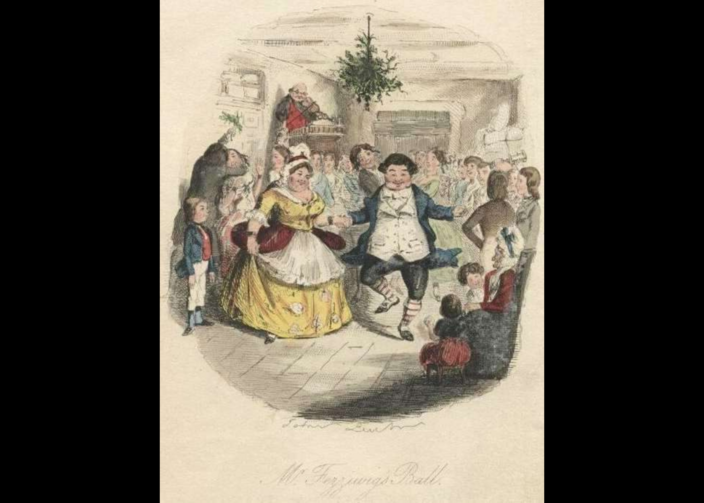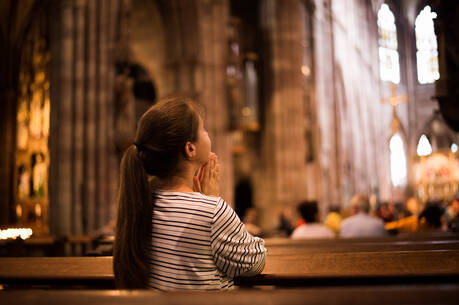On the desk in my room are some of my favorite objects and collectibles: a baseball card signed by Aaron Judge, a copy of my favorite novel, A Prayer for Owen Meany, a Beatles “Yellow Submarine” Hot Wheels figurine (I’m serious) and a framed piece of calligraphy written by my mother, memorializing a quote by Charles Dickens: “Reflect upon your present blessings of which every man has many—not on your past misfortunes, of which all men have some.”
My mother has long loved Dickens, encouraging me as an incoming freshman in high school to stick with my summer reading assignment of Great Expectations even when finishing it felt like a chore. It would be a while until I encountered Dickens again, enrolling in a “Dickensian Fiction” course my senior year of college. My mom was ecstatic, re-reading along with me as I explored London’s underworld in Oliver Twist for the first time, calling me on the phone periodically to discuss Fagin’s latest scheme or Oliver’s triumphs.
While the quote displayed on my desk isn’t attributed to any particular Dickens novel, my mother’s flourished handwriting is accompanied by a John Leech illustration of Mr. Fezziwig’s ball, a memorable scene from one of Dickens’s most celebrated works, A Christmas Carol.
Before last Christmas, I had seen plenty of adaptations of A Christmas Carol,including “The Muppet Christmas Carol” and, of course, Christmas episodes of “DuckTales” starring Scrooge McDuck (who, according to Forbes, is the second richest fictional character of all time), but I had never actually read the source text in full.
So, fresh off of finishing Dickens’s epic Bleak House in class and with an appetite to read more by the author, my mom and I decided to start a new Christmas tradition—reading a chapter of the Christmas classic by our fireplace every night leading up to Christmas Day.
A Christmas Carol is broken up into five different sections, or “staves”: Stave I introduces us to Scrooge and Marley’s ghost; Staves II, III and IV take Scrooge through time with the Ghosts of Christmas Past, Present and Future; and Stave V concludes the story. As Advent takes us on a four-week journey leading up to the birth of Christ, reading the five staves of “A Christmas Carol” feels like a mini-Advent, with each stave building up to Scrooge’s joyous change of heart.
My mom and I decided to start a new Christmas tradition—reading a chapter of the Christmas classic by our fireplace every night leading up to Christmas Day.
Dickens, a Christian, used his novels as a way to share his religious values, and A Christmas Carol is no exception. To me, Scrooge’s story reads as similar to the Apostle Matthew’s; both men worked in the business of collecting money from those who may not be in a position to pay their debts, and both men eventually realize the error of their ways. It’s incredible to look back on Scrooge’s initial attitude toward Christmas, spreading sentiments like “What’s Christmas time to you but a time for paying bills without money?” and to realize how far he comes.
Meanwhile, Tiny Tim is the perfect embodiment of the idea that the meek shall inherit the earth; “Spirit of Tiny Tim, thy childish essence was from God!,” Dickens writes about the boy. Tiny Tim is also fittingly included in the last line of the story, where we read: “And so, as Tiny Tim observed, God bless Us, Every One!”
So why wasn’t an illustration of Scrooge or Tiny Tim, the two central characters of A Christmas Carol, featured on my mom’s piece of calligraphy commemorating Dickens’s belief in gratitude?
My mom and I found our favorite part (and the emotional centerpiece) of A Christmas Carol to be Fezziwig’s ball, part of the stave in which The Ghost of Christmas Past takes Scrooge through his youth, ending up at a Christmas celebration thrown by his former business mentor.
The real reason that I think we were drawn to the scene was the fact that Fezziwig created a family for those who might not have had one to celebrate with on Christmas—a beautiful idea.
At first, we reveled in how Dickens waxed poetic about Fezziwig’s dancing. “A positive light appeared to issue from Fezziwig’s calves. They shone in every part of the dance like moons. You couldn’t have predicted at any given time, what would have become of them next,” Dickens writes. My mom is known to dance up a storm at any opportunity, and I immediately began to associate Fezziwig’s jovial dancing with her.
Fezziwig’s ball encapsulates how a song can be one of the principal spreaders of joy around the Christmas season. Dickens writes:
In came a fiddler with a music-book, and went up to the lofty desk, and made an orchestra of it…. When this result was brought about, old Fezziwig, clapping his hands to stop the dance, cried out, “Well done!” and the fiddler plunged his hot face into a pot of porter, especially provided for that purpose.
Reading this together, my mom and I pictured ourselves at the ball, possibly joining the fiddler for some porter, taking in the cheer of the event that Fezziwig had put together.
His show-stopping moves and his party-throwing skills aside, the real reason that I think we were drawn to the scene was the fact that Fezziwig created a family for those who might not have had one to celebrate with on Christmas—a beautiful idea.
An old tradition is an easy one to follow, but I know my new tradition with my mom is one that I will treasure for a long time to come.
In contrast to Scrooge’s miserly attitude, Fezziwig’s ball is thrown on his dime as a celebration for his employees and neighbors. Dickens’s masterful writing conveys this immense sense of community: “In they all came, one after another; some shyly, some boldly, some gracefully, some awkwardly, some pushing, some pulling; in they all came, anyhow and everyhow.”
The idea of such different people arriving from “anyhow and everyhow” to join together in a celebration of Christmas reads perfectly to me. Christmas is a time that allows us to gather with the people we hold dearest in our lives, no matter how difficult it may be to do so.
The scene also calls to mind the first Christmas at the Nativity, with humble shepherds and wise men coming from all walks of life to rejoice in the birth of the savior.
With Christmas rapidly approaching, I’m already beginning to picture myself by the fireplace in my family’s living room, warming my hands as they get ready to turn the pages of a text that I know will continue to be read for many more Christmases. An old tradition is an easy one to follow, but I know my new tradition with my mom is one that I will treasure for a long time to come.








